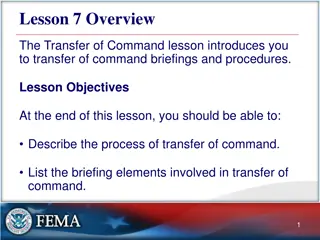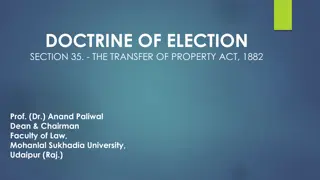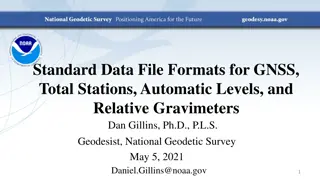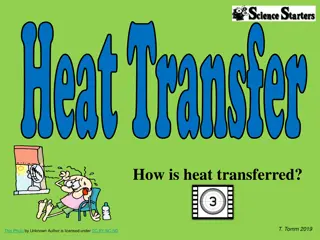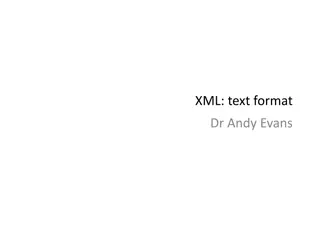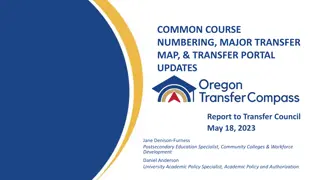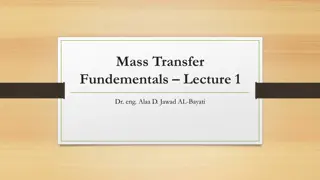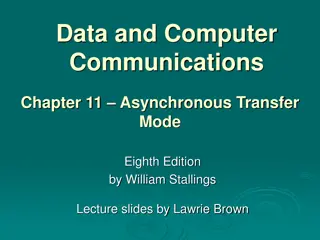Data Formats for Efficient Transfer and Understanding
XML, CSV, JSON, markup languages, and HTML are essential data formats used for efficient data transfer and interpretation. These formats allow for the structured representation of information in a human-readable manner, promoting easy comprehension and processing. XML facilitates extensible markup, CSV simplifies tabular data handling, JSON enables lightweight data exchange, and markup languages like HTML support content organization. Each format offers unique advantages and applications, catering to diverse data processing needs in the digital landscape.
Download Presentation

Please find below an Image/Link to download the presentation.
The content on the website is provided AS IS for your information and personal use only. It may not be sold, licensed, or shared on other websites without obtaining consent from the author.If you encounter any issues during the download, it is possible that the publisher has removed the file from their server.
You are allowed to download the files provided on this website for personal or commercial use, subject to the condition that they are used lawfully. All files are the property of their respective owners.
The content on the website is provided AS IS for your information and personal use only. It may not be sold, licensed, or shared on other websites without obtaining consent from the author.
E N D
Presentation Transcript
XML Dr Andy Evans
XML Styling and other issues Python and XML
Text-based data formats As data space has become cheaper, people have moved away from binary data formats. Text easier to understand for humans / coders. Move to open data formats encourages text. Text based on international standards so easier to transfer between software.
CSV 10,10,50,50,10 10,50,50,10,10 25,25,75,75,25 25,75,75,25,25 50,50,100,100,50 50,100,100,50,50 Classic format Comma Separated Variables (CSV). Easily parsed (see Core course). No information added by structure, so an ontology (in this case meaning a structured knowledge framework) must be externally imposed.
JSON (JavaScript Object Notation) { "type": "FeatureCollection", "features": [ { "type": "Feature", "geometry": { "type": "Point", "coordinates": [42.0, 21.0] }, "properties": { "prop0": "value0" } }] } Increasing popular light-weight data format. Text attribute and value pairs. Values can include more complex objects made up of further attribute-value pairs. Easily parsed. Small(ish) files. Limited structuring opportunities. GeoJSON example
Markup languages Tags and content. Tags often note the ontological context of the data, making the value have meaning: that is determining its semantic content. All based on Standard Generalized Markup Language (SGML) [ISO 8879]
HTML Hypertext Markup Language Nested tags giving information about the content. <HTML> <BODY> <P><B>This</B> is<BR>text <A href="index.html">homepage</A> </BODY> </HTML> Note that tags can be on their own, some by default, some through sloppiness. Not case sensitive. Contains style information (though use discouraged).
XML eXtensible Markup Language More generic. Extensible not fixed terms, but terms you can add to. Vast number of different versions for different kinds of information. Used a lot now because of the advantages of using human-readable data formats. Data transfer fast, memory cheap, and it is therefore now feasible.
GML Major geographical type is GML (Geographical Markup Language). Given a significant boost by the shift of Ordnance Survey from their own binary data format to this. Controlled by the Open GIS Consortium: http://www.opengeospatial.org/standards/gml <gml:Point gml:id="p21 <gml:coordinates>45.67, 88.56</gml:coordinates> </gml:Point> srsName="http://www.opengis.net/def/crs/EPSG/0/4326">
Simple example (Slightly simpler than GML) <?xml version="1.0" encoding="UTF-8"?> <map> <polygon id="p1"> <points>100,100 200,100 200, 200 100,000 100,100</points> </polygon> </map> Tag name-value attributes
Simple example Prolog: XML declaration (version) and text character set <?xml version="1.0" encoding="UTF-8"?> <map> <polygon id="p1"> <points>100,100 200,100 200, 200 100,000 100,100</points> </polygon> </map>
Text As some symbols are used, need to use & < > " for ampersand, <, >, " <! Comment --> CDATA blocks can be used to literally present text that otherwise might seem to be markup: <![CDATA[text including > this]]>
Well Formedness XML checked for well-formedness. Most tags have to be closed you can t be as sloppy as with HTML. Empty tags not enclosing look like this: <TAG /> or <TAG/>. Case-sensitive.
Document Object Model (DOM) One advantage of forcing good structure is we can treat the XML as a tree of data. Each element is a child of some parent. Document has a root. 100,100 Polygon 200,100 id= p1 200,200 Map 0, 10 Polygon 10,10 id = p2 10,0
Schema As well as checking for well-formedness we can check whether a document is valid against a schema : definition of the specific XML type. There are two popular schema types in XML: (older) DTD (Document Type Definition) (newer) XSD (XML Schema Definition) XSD more complex, but is XML itself only need one parser. In a separate text file, linked by a URI (URL or relative file location).
DTD DTD for the example: <!ELEMENT map (polygon)*> <!ELEMENT polygon (points)> <!ATTLIST polygon id ID #IMPLIED> <!ELEMENT points (#PCDATA)> "map"s may contain zero or more "polygon"s; "polygon"s must have one set of "points", and can also have an "attribute" "id". Points must be in text form. For dealing with whitespace, see XML Specification.
Linking to DTD Root element <?xml version="1.0" encoding="UTF-8"?> <!DOCTYPE map SYSTEM "map1.dtd"> <map> <polygon id="p1"> <points>100,100 200,100 200, 200 100,000 100,100</points> </polygon> </map> Put XML and DTD files in a directory and open the XML in a web browser, and the browser will check the XML.
XSD <xsi:schema xmlns:xsi="http://www.w3.org/2001/XMLSchema" targetNamespace="http://www.geog.leeds.ac.uk" xmlns="http://www.geog.leeds.ac.uk" elementFormDefault="qualified"> <xsi:element name="map"> <xsi:complexType> <xsi:sequence> <xsi:element name="polygon" minOccurs="0" maxOccurs="unbounded"> <xsi:complexType> <xsi:sequence> <xsi:element name="points" type="xsi:string"/> </xsi:sequence> <xsi:attribute name="id" type="xsi:ID"/> </xsi:complexType> </xsi:element> </xsi:sequence> </xsi:complexType> </xsi:element> </xsi:schema>
XSD Includes information on the namespace: a unique identifier (like http://www.geog.leeds.ac.uk). Allows us to distinguish our XML tag "polygon" from any other "polygon" XML tag.
Linking to XSD <?xml version="1.0" encoding="UTF-8"?> <map xmlns:xsi="http://www.w3.org/2001/XMLSchema-instance" xsi:schemaLocation="http://www.geog.leeds.ac.uk map2.xsd" > <polygon id="p1"> <points>100,100 200,100 200, 200 100,000 100,100</points> </polygon> </map> Note server URL and relative file location could just be a URL.
XML Styling and other issues Python and XML
Multiple views Nice thing is that this data can be styled in lots of different ways using stylesheets. To write these, we use the XSL (eXtensible Stylesheet Language). This has several parts, two of which are XSLT (XSL Transformations) and XPath.
Allows you to navigate around a document. For example: "/." : root of the document. "@" : an attribute. "//" : all elements like this in the XML. XPath /.p/h2 all 2nd-level headers in paragraphs in the root /.p/h2[3] 3rd 2nd-level header in paragraphs in the root //p/h2 all 2nd-level headers in any paragraph. //p/h2[@id= titleheader ] - all 2nd-level headers in any paragraph where id=titleheader. Numerous build-in functions for string, boolean, and number operations.
XSLT <?xml version="1.0" encoding="UTF-8"?> <xsl:stylesheet version="1.0" xmlns:xsl="http://www.w3.org/1999/XSL/Transform"> <xsl:output method='html' version='1.0' encoding='UTF- 8' indent='yes'/> <xsl:template match="/."> <html> <body> </body> </html> </xsl:template> </xsl:stylesheet> <h2>Polygons</h2> <p> <xsl:for-each select= /map/polygon"> <P> <xsl:value-of select="@id"/> : <xsl:value-of select="points"/> </P> </xsl:for-each> </p> Converts XML to HTML.
Linking to XSLT <?xml version="1.0" encoding="UTF-8"?> <?xml-stylesheet type="text/xsl" href="map3.xsl"?> <map xmlns:xsi="http://www.w3.org/2001/XMLSchema- instance" xsi:schemaLocation="http://www.geog.leeds.ac.uk map3.xsd" > <polygon id="p1"> <points>100,100 200,100 200, 200 100,000 100,100</points> </polygon> </map>
Views As XML As HTML
SVG Scalable Vector Graphics <?xml version="1.0" encoding="UTF-8"?> <xsl:stylesheet version="1.0" xmlns:xsl="http://www.w3.org/1999/XSL/Transform"> <xsl:output method='xml' doctype-system='http://www.w3.org/TR/2000/03/WD-SVG-20000303/DTD/svg- 20000303-stylable.dtd' doctype-public='-//W3C//DTD SVG 20000303 Stylable//EN"/' /> <xsl:template match="/"> <svg width="100%" height="100%" version="1.1" xmlns="http://www.w3.org/2000/svg"> <xsl:for-each select= /map/polygon"> <polygon style="fill:#cccccc;stroke:#000000;stroke-width:1"> <xsl:attribute name="points"><xsl:value-of select="points"/></xsl:attribute> </polygon> </xsl:for-each> </svg> </xsl:template> </xsl:stylesheet>
SVG SVG View All the same data, just different view. GML to XML and SVG: Maria, S. and Tsoulos, L (2003) A holistic Approach of Map Composition Utilizing XML Proceedings of SVG Open 2003 Vancouver, Canada - July 13-18, 2003.
Tools for writing XML Notepad++ will recognise it, but not check it. XML Notepad: http://msdn.microsoft.com/en-US/data/bb190600.aspx Eclipse But most browsers will allow you to view and validate XML.
Further information XML: http://www.w3.org/TR/xml11 http://en.wikipedia.org/wiki/XML http://en.wikipedia.org/wiki/Geography_Markup_Language Schema http://en.wikipedia.org/wiki/Document_Type_Definition http://www.w3schools.com/dtd/default.asp http://en.wikipedia.org/wiki/XML_Schema_%28W3C%29 http://www.w3schools.com/schema/schema_intro.asp http://www.w3schools.com/xml/xml_namespaces.asp Styling: http://www.w3schools.com/xpath/default.asp http://www.w3schools.com/xsl/default.asp
Key XML GML (Geographical Markup Language) Simple Object Access Protocol (SOAP) (Web service messaging using HTTP see also Web Services Description Language (WSDL)) Really Simple Syndication (RSS)
Problems Data types are defined by the schema in an ontology: how objects fit into a knowledge framework. Top-down approach. Someone, somewhere defines the ontology and everyone uses it. Can transform between ontologies, but, again, top-down. How do we negotiate different understandings? Compare with folksonomies developed by crowd-tagging.
XML Styling and other issues Python and XML
XML Parsing Two major choices: Document Object Model (DOM) / Tree-based Parsing: The whole document is read in and processed into a tree-structure that you can then navigate around, either as a DOM (API defined by W3C) or bespoke API. The whole document is loaded into memory. Stream based Parsing: The document is read in one element at a time, and you are given the attributes of each element. The document is not stored in memory.
Stream-based parsing Stream-based Parsing divided into: Push-Parsing / Event-based Parsing (Simple API for XML: SAX) The whole stream is read and as an element appears in a stream, a relevant method is called. The programmer has no control on the in-streaming. Pull-Parsing: The programmer asks for the next element in the XML and can then farm it off for processing. The programmer has complete control over the rate of movement through the XML. Trade off control and efficiency.
Standard library xml library contains: xml.etree.ElementTree :parse to tree :parse to DOM :lightweight parse to DOM :SAX push and pull parser :SAX-like push and pull parser :pull in partial DOM trees xml.dom xml.dom.minidom xml.sax xml.parsers.expat xml.dom.pulldom
Other libraries lxml : simple XML parsing Can be used with SAX (http://lxml.de/sax.html) but here we'll look at simple tree-based parsing.
Validation using lxml Against DTD: dtd_file = open("map1.dtd") xml1 = open("map1.xml").read() dtd = etree.DTD(dtd_file) root = etree.XML(xml1) print(dtd.validate(root)) Against XSD: xsd_file = open("map2.xsd") xml2 = open("map2.xml").read() xsd = etree.XMLSchema(etree.parse(xsd_file)) root = etree.XML(xml2) print(xsd.validate(root)) Note extra step of parsing the XSD XML
Parsing XML using lxml root = etree.XML(xml1) print (root.tag) print (root[0].tag) print (root[0].get("id")) print (root[0][0].tag) print (root[0][0].text) # Where xml1 is XML text # "map" # "polygon" # "p1" # "points" # "100,100 200,100" etc. <map> <polygon id="p1"> <points>100,100 200,100 200, 200 100,000 100,100</points> </polygon> </map>
Generating XML using lxml root = etree.XML(xml1) p2 = etree.Element("polygon") p2.set("id", "p2"); p2.append(etree.Element("points")) p2[0].text = "100,100 100,200 200,200 200,100" # Set points text root.append(p2) print (root[1].tag) # Could start from nothing # Create polygon # Set attribute # Append points # Append polygon # Check
Print XML out = etree.tostring(root, pretty_print=True) print(out) writer = open('xml3.xml', 'wb') writer.write(out) writer.close() # Open for binary write Pretty print puts linebreaks between objects etc.
Transform XML xsl3 = open("map3.xsl").read() xslt_root = etree.XML(xsl3) transform = etree.XSLT(xslt_root) result_tree = transform(root) transformed_text = str(result_tree) # Read stylesheet # Parse stylesheet # Make transform # Transform some XML root print(transformed_text) writer = open('map3.html', 'w') writer.write(transformed_text) # Normal writer Note that if the XML is from a file it doesn't need the XSL is referenced in the XML, a major advantage in applying arbitrary stylesheets.
Other libraries dicttoxml untangle : conversion of dicts to XML : library for converting DOMs to object models Not distributed with Anaconda, but worth looking at. Nice intro by Kenneth Reitz at: http://docs.python-guide.org/en/latest/scenarios/xml/





